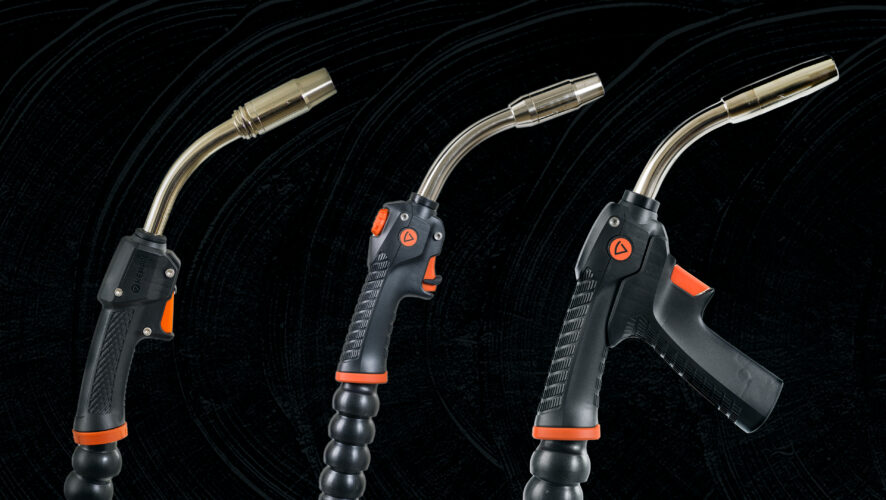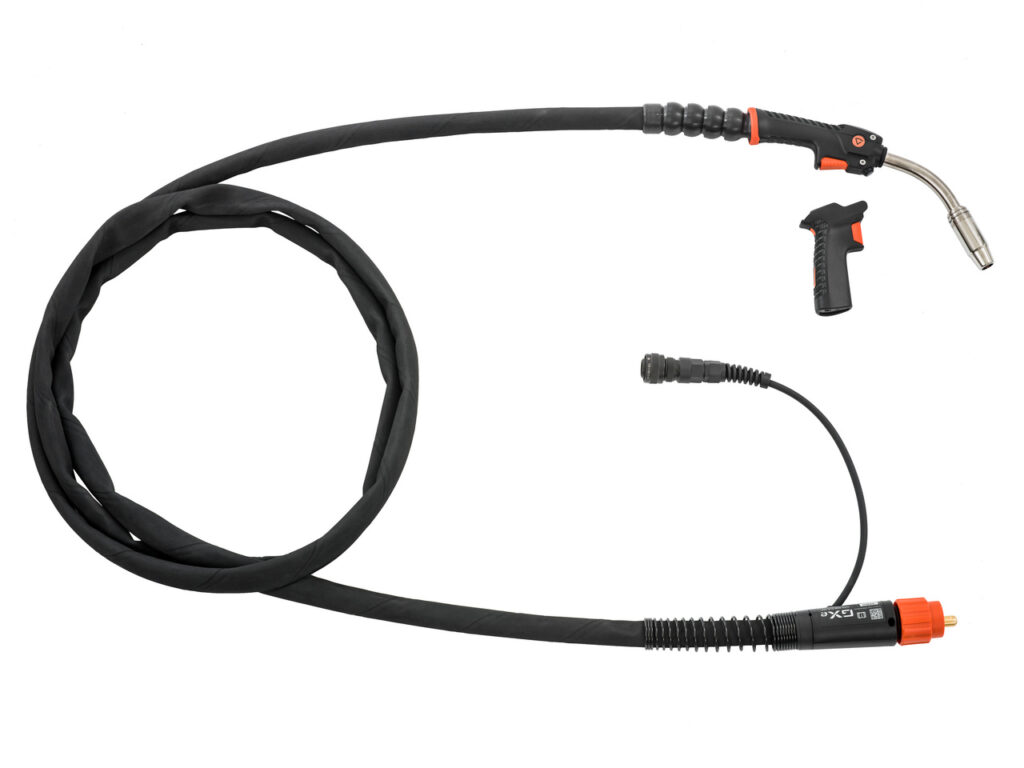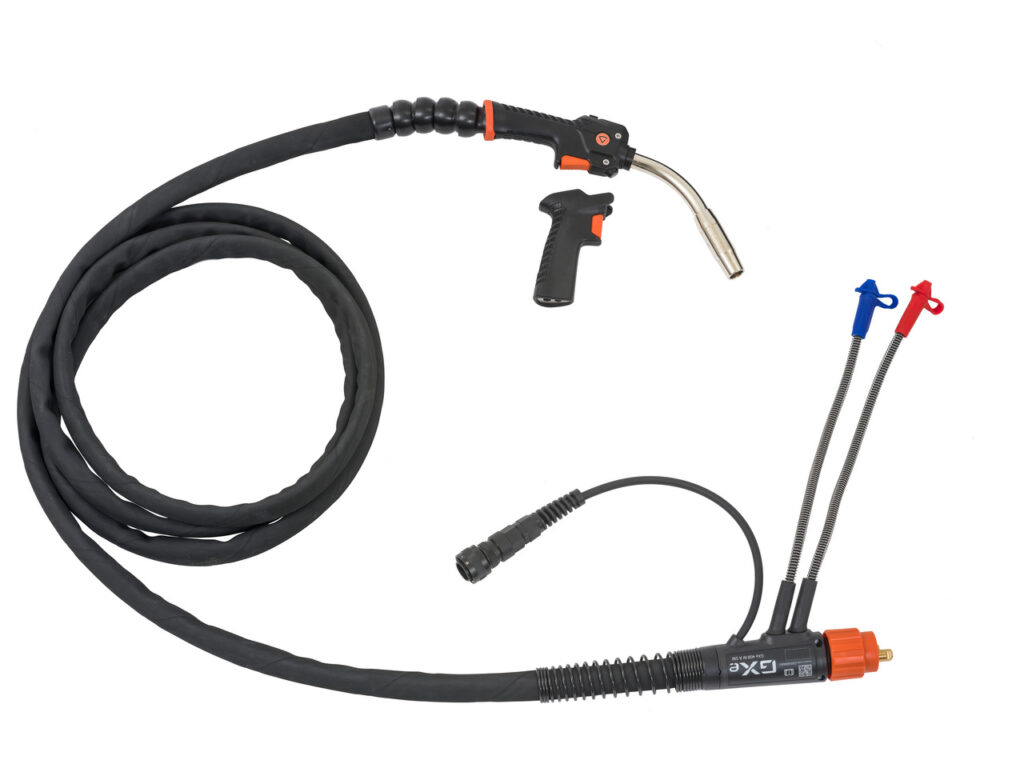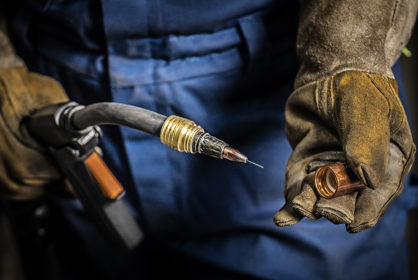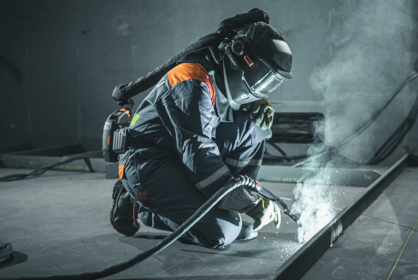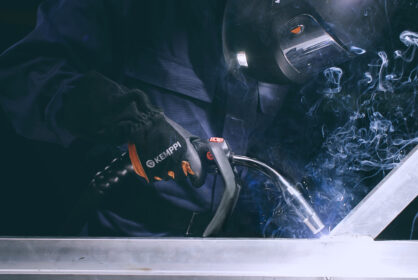MIG/MAG welding is one of the most common and versatile welding processes. It is used for various applications, such as automotive, construction, fabrication, and maintenance. However, choosing a suitable welding torch for your job is essential to achieve optimal results.
Several factors influence what kind of welding torch you should choose:
- Gas-cooled or water-cooled cooling system
- Welding application and power supply
- The angle and shape of the MIG/MAG torch
- Torch length and diameter
- Ergonomics
Gas-cooled vs water-cooled torches
One of the main factors to consider when choosing a welding torch is the type of cooling system. There are two main cooling methods for welding torches: gas-cooled and water-cooled. Each type has advantages and disadvantages, depending on the welding current, duty cycle, base material, and welder’s preference.
Gas-cooled MIG/MAG torches
The structure is cooled mainly through the ambient air in a gas-cooled torch. The shielding gas flow also cools the MIG/MAG torch, but especially with mixed gas, the cooling effect is negligible. The cooling type’s importance is reflected in the torches’ power rating and operating ratio. In the IEC standard for welding torches, the manufacturer must specify the maximum welding current and the operating ratio. The allowed load capacity for gas-cooled torches is 35% or 60%. A load capacity of 35% is the standard rating for Kemppi MIG/MAG torches. Without water cooling, a 100 % operating ratio would only be possible at very low welding currents. Gas-cooled torches are lighter, affordable, and easier to handle than water-cooled torches, but they have lower power ratings and higher heat generation.
Water-cooled MIG/MAG torches
Water-cooled welding torches require the welding equipment to be water-cooled. The cooling unit circulates coolant through the tip of the torch and the water flow cable in the hose assembly, cooling the structure. Thus, it is standard for these torches to indicate a load capacity of 100%. Water-cooled welding machines are used more often than gas-cooled welding machines for aluminum and stainless steel. However, there are many regional differences, and it is possible to weld different base materials with both cooling methods. The water-cooled system is a higher investment, but efficient cooling extends the life of the MIG/MAG torch and consumables and allows more efficient operation at higher welding currents than a gas-cooled system.
Welding application and power supply
Another factor influencing the choice of MIG/MAG welding torch is the type of welding application. The determining factors are the base material and its thickness, the highest welding current used, and the duty cycle required by the welding application. The power required for welding thin materials is lower than for welding thicker materials. Sometimes, it is safer from the point of view of the torch’s lifetime to choose a higher load capacity if the physical size of the MIG/MAG torch is not an obstacle. Kemppi offers an extensive range of MIG/MAG welding torches from 200 to 600 A.
The angle and shape of the MIG/MAG torch’s neck
The angle and shape of the torch neck affect the visibility, comfort, and control of the welder. The angle of the torch neck can vary from 0 to 90 degrees, depending on the welding position and the joint geometry. Some torches have a fixed angle, while others have a flexible or rotatable neck that can be adjusted according to the welding situation. The shape of the torch neck can also vary from straight to curved, depending on the welder’s preference. Kemppi’s Flexlite GX MIG/MAG torch family includes several neck options, such as changeable, flexible, or rotating necks.
Torch length and diameter
The length and diameter of the torch affect the welder’s reach, usability, and ergonomics. Longer and thinner torches can access hard-to-reach spots but may also be more prone to bending and overheating. Shorter and thicker torches can handle higher currents and provide more stability, but they may also be more cumbersome and heavier.
Ergonomics
Before making your final decision, it’s good to try to hold the torch in your hand. Does it feel light and easy to handle or heavy and bulky? Let’s not forget that most welders hold their torches several hours a day and several minutes at a time. Also, the torch trigger plays a significant role. Suppose you want to use the trigger with your index finger. In that case, the trigger should be located at the bottom, or you can even consider using the separate gun handle, a standard accessory in all Kemppi MIG/MAG torches.
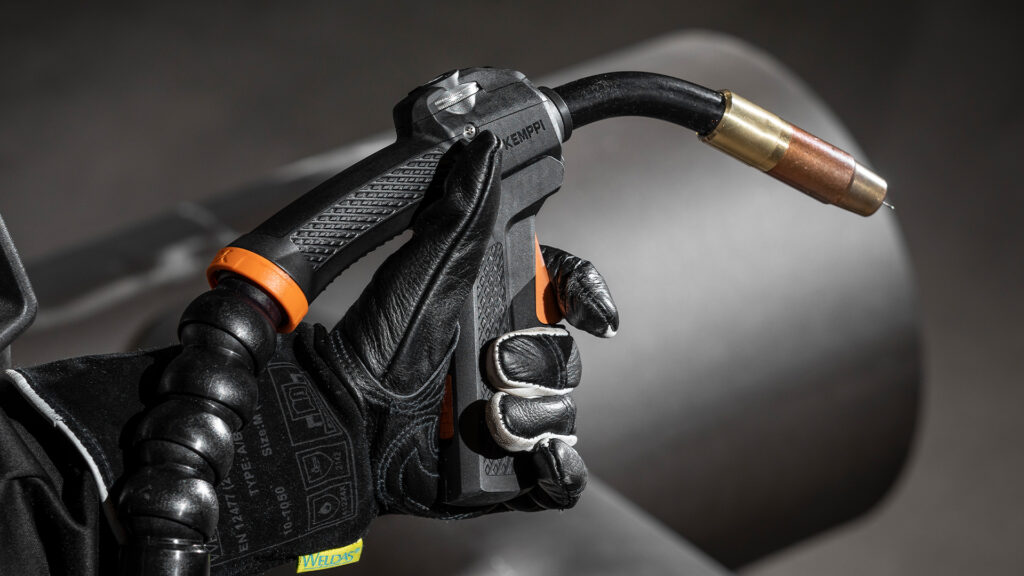
Conclusion
Choosing the suitable welding torch for your MIG/MAG welding needs is not trivial, but it involves many factors. Consider the cooling method, materials, and thickness you are welding, the length and diameter of the torch, and the angle and shape of the torch neck to select the best torch for your welding needs.
A good welding torch will improve the quality and productivity of your welding work and enhance the welder’s comfort, ergonomics, and safety.
At Kemppi, we are experts in the design, comfort, and welding performance of MIG/MAG torches. With our newest MIG/MAG torch family, Flexlite GXe, we have improved our torch structure in many ways to make it even better.











